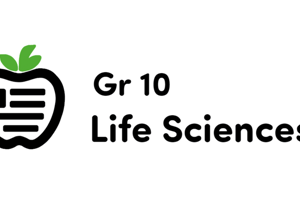Podcast
Questions and Answers
How did Beijerinck's work with the tobacco mosaic virus contribute to our understanding of infectious agents?
How did Beijerinck's work with the tobacco mosaic virus contribute to our understanding of infectious agents?
- He demonstrated that the infected plant extract could cause disease in healthy plants, referring to it as 'Contagium Vivum Fluidum'. (correct)
- He was the first to observe and describe live cells using a microscope.
- He discovered that viruses could be crystallized into proteins.
- He recognized certain microbes as the causal agent of tobacco mosaic disease.
Which of the following pairs correctly links a scientist with their contribution to the classification of organisms?
Which of the following pairs correctly links a scientist with their contribution to the classification of organisms?
- T.O. Diener - Recognized microbes as causal agents of disease
- Aristotle - Proposed the two-kingdom classification system (correct)
- Robert Brown - Proposed the five-kingdom classification system
- Carolus Linnaeus - Developed the natural system of classification
How did Stanley's work advance the understanding of viruses?
How did Stanley's work advance the understanding of viruses?
- He observed and described live cells for the first time.
- He proposed the five-kingdom classification system.
- He demonstrated that viruses could be crystallized, with the crystals being largely composed of proteins. (correct)
- He discovered viroids, infectious agents composed only of RNA.
What distinguishes T.O. Diener's discovery from those made by Ivanowsky and Beijerinck?
What distinguishes T.O. Diener's discovery from those made by Ivanowsky and Beijerinck?
In what way did Anton Von Leeuwenhoek's contribution differ from that of Robert Brown?
In what way did Anton Von Leeuwenhoek's contribution differ from that of Robert Brown?
How did the work of George Bentham and J.D. Hooker influence the field of taxonomy?
How did the work of George Bentham and J.D. Hooker influence the field of taxonomy?
What is the significance of G.N. Ramachandran's work in the field of biology?
What is the significance of G.N. Ramachandran's work in the field of biology?
In what fundamental way does the work of Carolus Linnaeus differ from that of R.H. Whittaker?
In what fundamental way does the work of Carolus Linnaeus differ from that of R.H. Whittaker?
Ernst Mayr is often referred to as the 'Darwin of the 20th Century.' What aspect of his work likely earned him this title?
Ernst Mayr is often referred to as the 'Darwin of the 20th Century.' What aspect of his work likely earned him this title?
How does the contribution of Dmitri Ivanowsky relate to the later work of Beijerinck and Stanley?
How does the contribution of Dmitri Ivanowsky relate to the later work of Beijerinck and Stanley?
Flashcards
Aristotle's Classification
Aristotle's Classification
Proposed a two-kingdom classification system, grouping organisms into Plantae and Animalia.
R.H. Whittaker's Classification
R.H. Whittaker's Classification
Proposed the five-kingdom classification system, which includes Monera, Protista, Fungi, Plantae, and Animalia.
Dmitri Ivanowsky's Discovery
Dmitri Ivanowsky's Discovery
Recognized that certain microbes were the causal agent of tobacco mosaic disease.
M.W. Beijerinck's Experiment
M.W. Beijerinck's Experiment
Signup and view all the flashcards
W.M. Stanley's Discovery
W.M. Stanley's Discovery
Signup and view all the flashcards
T.O. Diener's Discovery
T.O. Diener's Discovery
Signup and view all the flashcards
Carolus Linnaeus's System
Carolus Linnaeus's System
Signup and view all the flashcards
Bentham & Hooker
Bentham & Hooker
Signup and view all the flashcards
G.N. Ramachandran
G.N. Ramachandran
Signup and view all the flashcards
Robert Brown's Discovery
Robert Brown's Discovery
Signup and view all the flashcards
Study Notes
- Aristotle proposed the Two Kingdom Classification, which included Plantae and Animalia.
- R.H. Whittaker in 1969 proposed the Five Kingdom Classification: Monera, Protista, Fungi, Plantae, and Animalia.
- Dmitri Ivanowsky in 1892 recognized certain microbes as the causal agent of tobacco mosaic disease.
- M.W. Beijerinek in 1898 demonstrated that infected plant extract can cause disease in healthy plants and called the fluid "Contagium Vivum Fluidum".
- W.M. Stanley in 1935 showed that viruses could be crystallized, and the crystals largely consist of proteins.
- T.O. Diener in 1971 discovered Viroids.
- Carolus Linnaeus developed an artificial classification system: Systema Naturae book and binomial nomenclature.
- George Benthem and J.D. Hooker proposed the Natural System of Classification.
- Ernst Mayr is known as "Darwin of the 20th Century".
- G.N. Ramachandran proposed the Ramachandran plot for studying the conformation of proteins.
- Anton Von Leeuwenhoek first saw and described live cells.
- Robert Brown in 1831 discovered the nucleus.
- Flemming (further info missing)
Studying That Suits You
Use AI to generate personalized quizzes and flashcards to suit your learning preferences.




